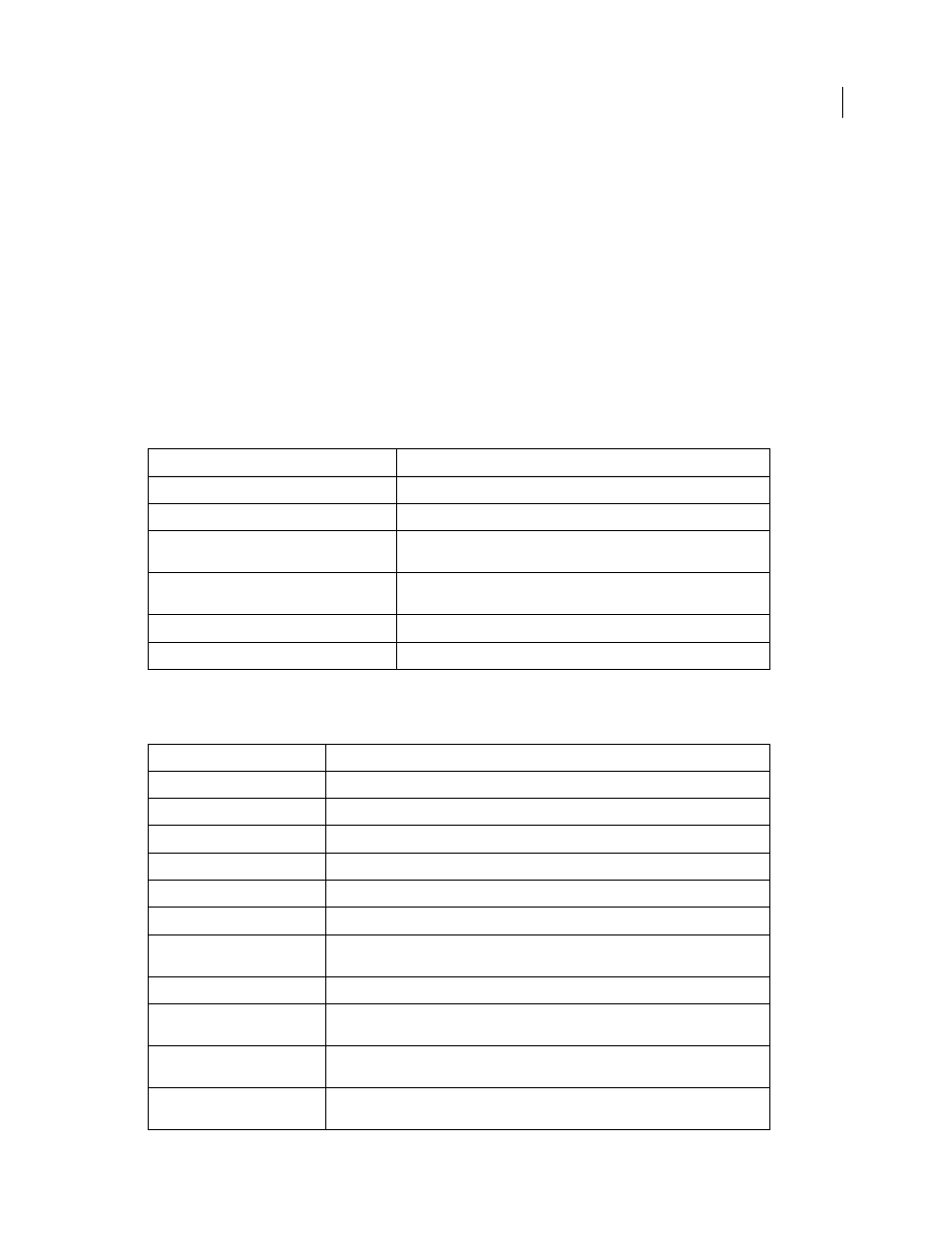Chapter 14: element object, Element object, Summary table for the – Adobe Extending Flash Professional CS5 User Manual
Page 207: See the first example below

185
Last updated 5/2/2011
Chapter 14: Element object
Availability
Flash MX 2004.
Description
Everything that appears on the Stage is of the type Element. The following code example lets you select an element:
var el = fl.getDocumentDOM().getTimeline().layers[0].frames[0].elements[0];
Method summary
The following methods are available for the Element object:
Property summary
The following properties are available for the Element object:
Method
Description
Retrieves the value of the data specified by the
name
parameter.
element.getTransformationPoint()
Gets the value of the specified element’s transformation point.
Determines whether the specified data has been attached to the specified
element.
element.removePersistentData()
Removes any persistent data with the specified name that has been
attached to the object.
Stores data with an element.
element.setTransformationPoint()
Sets the position of the element’s transformation point.
Property
Description
Read-only; an integer that has a value greater than 0 for the depth of the object in the view.
Read-only; a string that represents the type of the specified element.
A float value that specifies the height of the element in pixels.
Read-only; represents the
on which the element is located.
Read-only; a float value that represents the left side of the element.
A Boolean value:
true
if the element is locked;
false
otherwise.
A
. The matrix has properties
a
,
b
,
c
,
d
, t
x
, and
ty
.
a
,
b
,
c
, and
d
are floating-
point values;
tx
and
ty
are coordinates.
A string that specifies the name of the element, normally referred to as the Instance name.
An integer or float value between -180 and 180 that specifies the object’s clockwise
rotation, in degrees.
A float value that specifies the x scale value of symbols, drawing objects, and primitive
rectangles and ovals.
A float value that specifies the y scale value of symbols, drawing objects, and primitive
rectangles and ovals.
